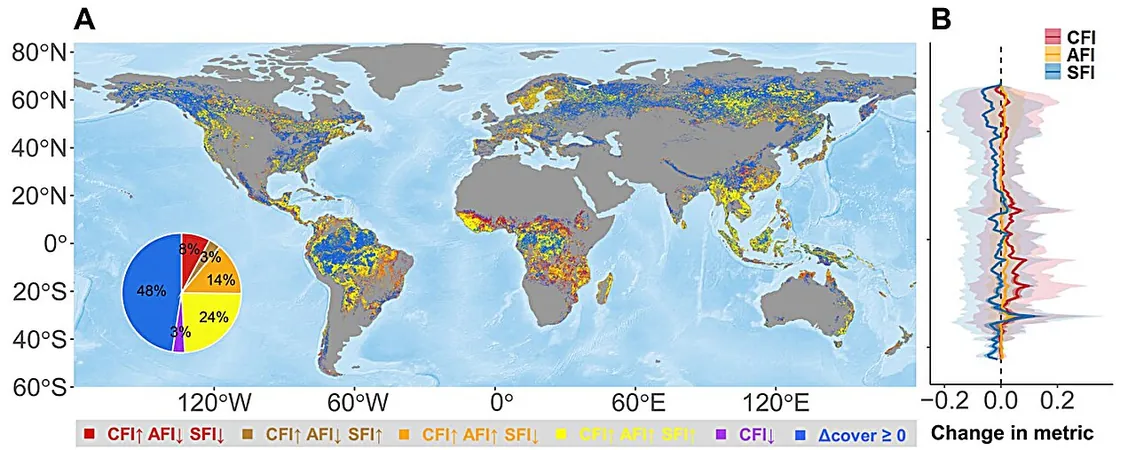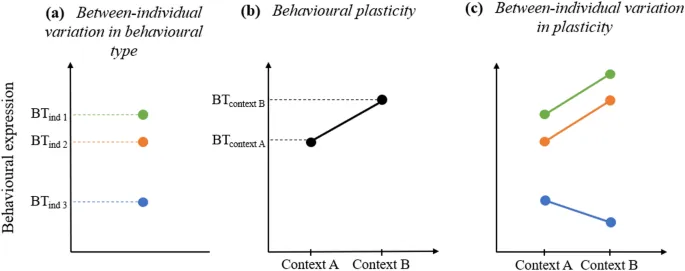
Shocking New Study Reveals Forest Fragmentation on the Rise Worldwide!
2025-09-12
Author: John Tan
While deforestation grabs headlines as a major threat to biodiversity and carbon storage, an equally alarming issue is lurking in the shadows: habitat fragmentation. This phenomenon is breaking up larger forests into smaller, isolated patches, seriously threatening our planet's ecosystems.
As these forests become divided, habitat connectivity diminishes, leading to harsher conditions for wildlife. The implications? Reduced biodiversity and a decrease in carbon-storing capabilities, essential for combating climate change.
A groundbreaking study published in the journal *Science* has unveiled that forest fragmentation is alarmingly increasing in more than half of the world’s forests, particularly in tropical regions. This comes despite previous claims in 2023 that suggested fragmentation was on the decline.
The researchers behind the new study believe that the conflicting results stem from the types of metrics used to measure fragmentation. The earlier study focused solely on structural aspects—like the number and size of forest patches—while others have explored connectivity metrics, which take into account how these patches relate to one another.
"To accurately track our conservation goals, we must incorporate ecologically significant metrics that capture the full picture of fragmentation," the authors emphasize.
To achieve this, scientists analyzed high-resolution satellite data from 2000 to 2020, employing nine fragmentation metrics that encompassed structure, aggregation, and connectivity. Their findings were alarming: fragmentation increased in an estimated 51% to 67% of global forests and 58% to 80% of tropical forests.
In stark contrast, metrics focused exclusively on structure indicated only a 30% to 35% rise in fragmentation during the same period.
The study also identified various drivers fueling fragmentation, including shifting agriculture (responsible for 37% of global fragmentation), forestry activities (34%), and to a lesser extent, wildfires and commodity-driven deforestation. Encouragingly, protected areas experienced a staggering 82% less fragmentation than unprotected zones, largely due to decreased agricultural activities.
This finding suggests that many fragmented areas can be restored, as the causes are often revertible human practices like agriculture and logging.
"Our results highlight the crucial role of tropical protected areas in combating human-driven fragmentation," the researchers assert, emphasizing the urgent need for expansion of such protections.
However, the researchers caution about the limitations in their data, such as the challenges in resolving narrow roads and differentiating natural forests from agroforestry, which might result in underestimating the loss of natural forests.
With these findings, the study reveals a stark decline in forest ecological integrity across the globe, primarily driven by human activities. The urgent need for reliable, ecologically relevant tools to monitor these changes cannot be overstated.



 Brasil (PT)
Brasil (PT)
 Canada (EN)
Canada (EN)
 Chile (ES)
Chile (ES)
 Česko (CS)
Česko (CS)
 대한민국 (KO)
대한민국 (KO)
 España (ES)
España (ES)
 France (FR)
France (FR)
 Hong Kong (EN)
Hong Kong (EN)
 Italia (IT)
Italia (IT)
 日本 (JA)
日本 (JA)
 Magyarország (HU)
Magyarország (HU)
 Norge (NO)
Norge (NO)
 Polska (PL)
Polska (PL)
 Schweiz (DE)
Schweiz (DE)
 Singapore (EN)
Singapore (EN)
 Sverige (SV)
Sverige (SV)
 Suomi (FI)
Suomi (FI)
 Türkiye (TR)
Türkiye (TR)
 الإمارات العربية المتحدة (AR)
الإمارات العربية المتحدة (AR)